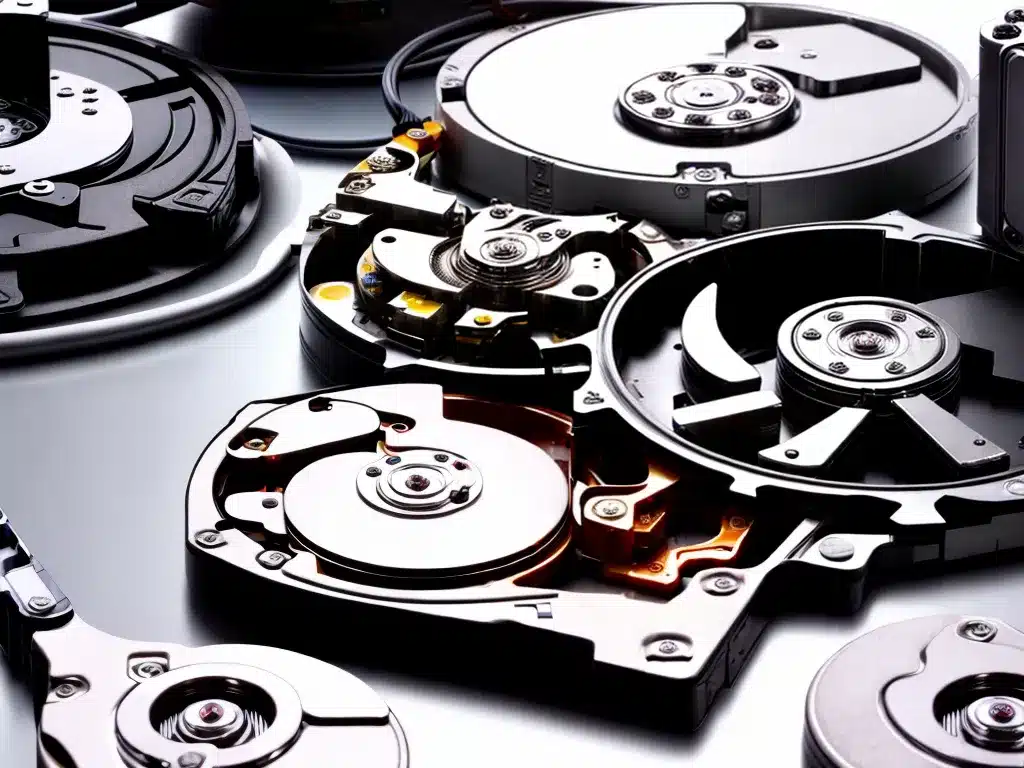
Losing data due to a crashed hard drive can be devastating. As someone who stores important photos, documents, and other irreplaceable files on my computer, the thought of suddenly not being able to access them is terrifying. However, there are still options for trying to recover data from a failed hard drive if you know where to look. In this article, I’ll provide an in-depth guide on recovering data from crashed hard drives so you can hopefully rescue your important files.
Evaluating the Damage
The first step is to evaluate the extent of the hard drive crash to determine if data recovery is possible. There are varying levels of hard drive failure:
Logical Failures
These occur when the file system or partition table on the drive becomes corrupted. The physical hard drive components function properly, but the drive can’t be accessed normally through the operating system. However, the data likely still exists intact on the disk platters and has a good chance of being recovered.
Physical Failures
These are hardware-level failures where something physically goes wrong with a component like the controller board, motor, or read/write heads. Data recovery is challenging but possible in some cases where the platters are still intact. However, physical damage usually leads to more severe data loss.
Complete Catastrophic Failures
In worst case scenarios, a hard drive can experience complete physical destruction – for example, from a head crash scraping the platters or fire/water damage. If the platters suffer physical damage, virtually no data can be recovered.
The best bet for successful data recovery is if the hard drive is logically corrupted but has no physical damage. I’ll focus on that scenario for the rest of this guide.
Removing the Hard Drive
To maximize the chances of data recovery, it’s best to physically remove the hard drive from the computer and connect it to a separate working computer as an external device. This allows me to run specialized data recovery software directly on the damaged drive, without the operating system getting in the way.
Here are the steps I take to carefully extract the hard drive:
- Unplug the computer and remove the case cover to access the internal components.
- Locate the hard drive and disconnect the SATA and power cables. For laptops, remove any small screws securing the hard drive in place.
- Slide the hard drive out from its bay and avoid knocking or rough handling that could further damage it.
- Get an external hard drive enclosure or SATA to USB adapter cable.
- Connect the hard drive to another computer with the enclosure or adapter cable.
At this point the damaged hard drive should show up as an external device on the new computer, and I can proceed with read-only data recovery operations.
Using Data Recovery Software
Once the failed drive is connected externally, data recovery software provides the best chance of retrieving files from it. The software is designed to bypass the file system corruption and read the raw contents of the disk platter.
There are many data recovery programs available both commercially and for free. I recommend trying multiple applications to compare the results. Here are some top options I’ve used successfully:
Commercial Software
- Ontrack EasyRecovery – Powerful and fast deep scanning capable of recovering a wide range of file types from formatted or corrupted drives.
- Stellar Data Recovery – Retrieves lost partitions and rebuilds directories and files. Includes a free preview of recoverable data.
- R-Studio – Uses advanced algorithms to recover files other utilities may miss. Good for damaged or deleted partitions.
Free Software
- Recuva – From Piriform, this is one of the most popular free file recovery tools. It’s easy to use with basic and deep scan modes.
- Disk Drill Has convenient features like file recovery vaults for saving backups of deleted files.
- PhotoRec – Specializes in recovering lost media files like photos, videos, and documents, even from formatted disks.
The best strategy I’ve found is to first perform a quick scan with multiple programs to see which finds the most files, then run deeper scans with the most successful utilities.
Recovering Data from Physical Failures
If the hard drive hardware is damaged and not detected at all, data recovery requires more specialized procedures. This involves opening up the hard drive in a dust-free cleanroom and transplanting the platters into a separate working hard drive unit.
Professional data recovery labs have the proper sterile environment and proprietary equipment to safely do these manual procedures without touching or damaging the platters. Average consumers shouldn’t attempt this type of recovery themselves.
Success rates for physical hard drive recovery vary widely based on the damage and how professionally the procedure is performed. Costs easily run over $1000 and there’s no guarantee viable data can be recovered. But for mission critical data, it can be worth the effort and expense.
Don’t Give Up Too Soon!
The key takeaway after a hard drive crash is to not hastily abandon hope of getting your data back. While catastrophic failures with platter damage offer low odds of recovery, logically failed drives have a decent chance as long as the right software and techniques are utilized.
Carefully removing the hard drive and connecting it externally to scan with data recovery programs provides the best results. Just make sure to avoid any further physical damage to the drive.
With an intentional and methodical approach, recovering data from a seemingly dead hard drive is often possible. Don’t give up too soon on rescuing those important photos, documents and other personal files!












